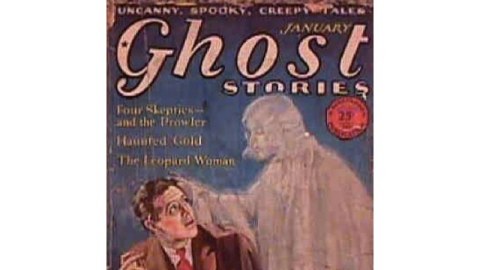When the Guy in the Bed Feels Deader Than the Guy in the Coffin

Don’t just kill that guy, says Paul Rubens in Buffy the Vampire Slayer. “Kill him a lot.“ It’s a funny line (a great line, really) because it plays with the on-off logic of death: In the vampireless real world, you’re either dead or you aren’t. There’s no “more” or “less” to it. But in the human mind, according to this paper, matters aren’t logical-binary. The authors found that people ascribed more of the traits of death to the sort of person from whom organs are “harvested”—brain-dead, but still breathing with machine assistance—than they do to a corpse. In other words, a person who is in a “persistent vegetative state” feels, somehow, more dead than a person mouldering away in a coffin.
As they report in the current issue of Cognition, Kurt Gray, Annie Knickman and Dan Wegner gave 201 people a story to read about a guy named David who suffers a serious accident. In one version, he recovers. In another, he dies. In a third, “David’s entire brain was destroyed, except for the one part that keeps him breathing. So while his body is still technically alive, he will never wake up again.” After reading, the volunteers had to rate how much they agreed with various statements about David’s traits, for example, whether he could influence events, tell right from wrong, or have feelings and memories. Of course, people were far less inclined to see these signs of life in dead David than they did in the living version. But, weirdly, they rated the vegetative David much lower on life-signs than the corpse. Dead felt quite dead to them; but brain dead felt more so.
Gray et al. speculate that the reason is belief in an afterlife, where the soul persists without the body. People with such beliefs, they argue, are impelled when they think of a dead body to imagine the soul floating about elsewhere. But when their attention is drawn to a body that is (a) still breathing but (b) brainless, they feel have no place to locate the soul, and so they feel that it is extinguished.
To test this, the authors ran a second experiment, in which the same story had two different versions of the deceased David: One in which the reader simply learned that he died, and another in which he was killed a lot: “After being embalmed at the morgue, he was buried in the local cemetery. David now lies in a coffin underground.” Once again, dead David in either version was rated as feeling less dead than persistently vegetative David. However, because this time the experimenters had asked about religious beliefs, they did find a difference between believers and non-believers that, they argue, confirms their explanation. It turned out that people without strong religious belief gave corpse-David and vegetative-David very similar ratings (though the corpse still rated slightly closer to alive). But religious people ascribed far fewer signs of life to the vegetative person than to the dead one.
An interesting distinction, but, as this Economist piece points out, the big news here is that even people who don’t claim explicit beliefs about an afterlife will see the corpse as more lively than the person in a vegetative state. At least, they do as long as it is a thought experiment. An actual brain-dead patient, head wrapped in bandages and chest moving placidly in the familiar in-out of breathing, looks way more alive than a corpse and, often, more alive than healthy people who are unconscious, anesthetized or injured. So I suspect that photographs or videos would reverse this result.
Still, most of us in industrialized societies don’t see death or severe brain damage up close. Hence, a tendency to see mental incapacity as somehow more dead than death could have practical and political consequences—especially in an ever-grayer societies in which instances of dementia are expected to double in the next 20 years. That’s the argument made by Susan M. Behuniak in this paper published earlier this year in the journal Ageing and Society.
Behuniak toted up the seven key traits of zombies, as illustrated by the world expert on same, George Romero: “exceptional physical characteristics, lack of self-recognition, failure to recognize others, cannibalization of living human beings, the exponential spreading of this plague, the resulting horror of those still unafflicted, and the zombie’s overwhelming hopelessness that makes death a preferred alternative [to] continued existence.” Her search in the medical literature on Alzheimers, Behuniak writes, found that three of these tropes (strange appearance, loss of self, and inability to know other people) were commonly associated with that disease. Another three, she claims, are there between the lines (that Alzheimers is epidemic, terrifying and a fate worse than death). And cannibalism? That’s rife in descriptions of how Alzheimers’ patients affect others, she argues.
When I write in this blog about a “post-rational” era, I don’t mean that people have changed and become post-rational, or that psychology has ditched reason. I mean that we’re becoming a post-rational society as we shed the assumption that people can be counted upon to behave according to the dictates of explicit, logical arguments. A rational society assumes that people can distinguish between dead, demented and brain-dead, and organizes itself accordingly. Perhaps a post-rational society will organize itself a little differently—to protect people against unnoticed biases that might incline us to see death where it hasn’t yet struck.
Gray, K., Anne Knickman, T., & Wegner, D. (2011). More dead than dead: Perceptions of persons in the persistent vegetative state Cognition DOI: 10.1016/j.cognition.2011.06.014
Behuniak, S. (2010). The living dead? The construction of people with Alzheimer’s disease as zombies Ageing and Society, 31 (01), 70-92 DOI: 10.1017/S0144686X10000693





